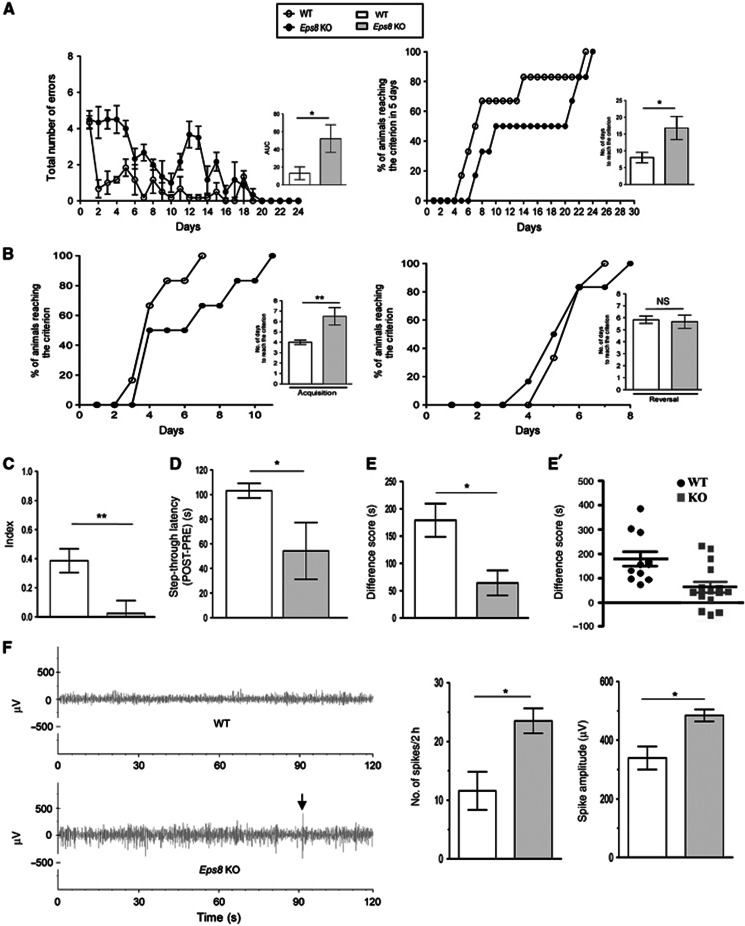Figure 1.
Eps8 KO mice are impaired in learning and sociability. (A and B) Eps8 KO mice are impaired in spatial learning. (A) Eight-arm radial maze. (Left) Eps8 KO mice show a delayed learning in terms of increased number of errors statistically evaluated as the area under the curve (AUC); (Right) A lower number of Eps8 KO mice reaches the criterion within 5 days evaluated as number of days taken to reach the criterion. (B) T-maze task. During the acquisition phase (left), Eps8 KO mice exhibit a delayed learning in terms of increased number of days to reach the criterion but normal learning during reversal phase (right). The number of days to reach the criterion during both phases is illustrated in the flanking graph. (C) Novel object recognition test. Eps8 KO mice show no net preference between novel and familiar objects, as shown by the lower discrimination index. (D) Passive avoidance task. A reduced step-through latency is detected in Eps8 KO mice compared to wt animals. (E, E′) Sociability test. Eps8 KO mice spend significantly less time exploring a conspecific than an empty cage in a social choice paradigm, as shown by the significantly lower difference score. (F) EEG. Eps8 KO mice display abnormal EEG profile. (Left) EEG recordings of two representative mice (one for each genotype) for 120 s. KO mouse shows higher spike activity. The mean number of spikes recorded for 2 h in Eps8 KO mice is higher compared to wt (centre) and the spike amplitude was larger than wt (right). Increments above a threshold determined according to the increments distribution through an unsupervised approach (Manfredi et al, 2009) and whose amplitude was greater than twice the background were considered as spikes. Data are shown as mean±s.e.m. of ten animals for each genotype and each test. Statistical assessments were performed by Student’s t-test comparing wt and KO mice (*P<0.05, **P<0.01). n.s., not significant.

